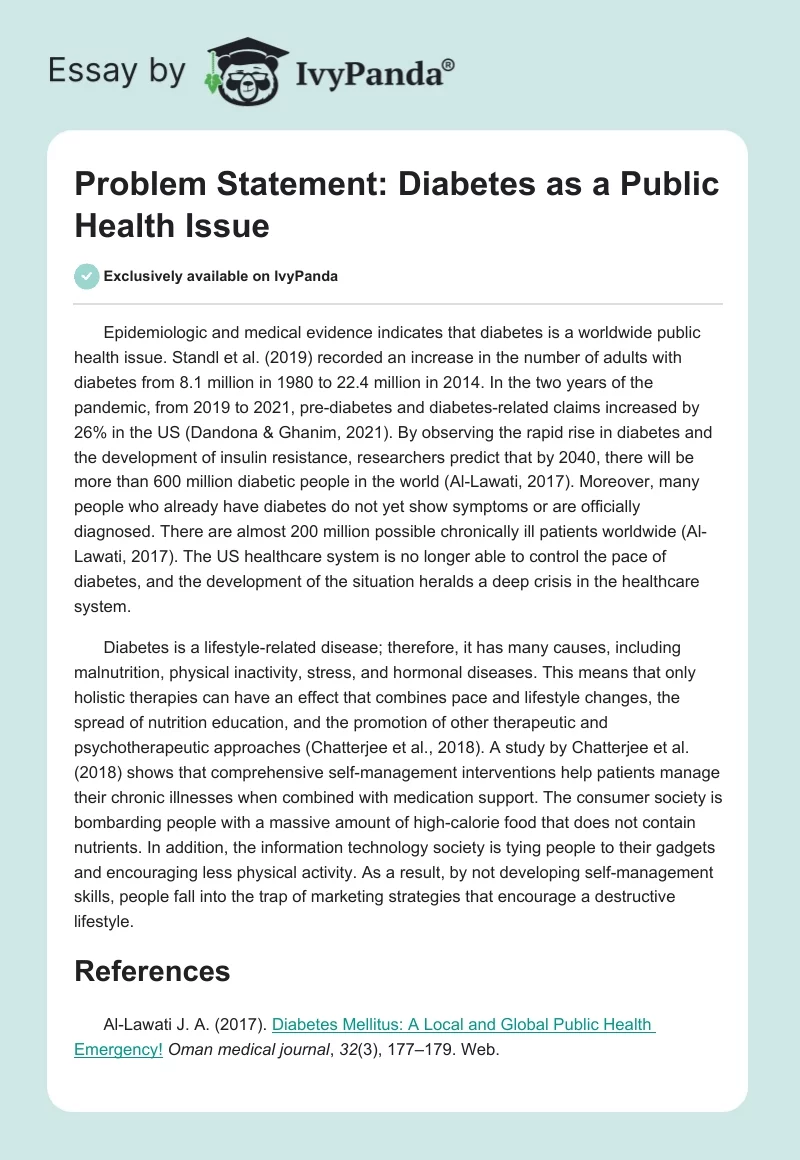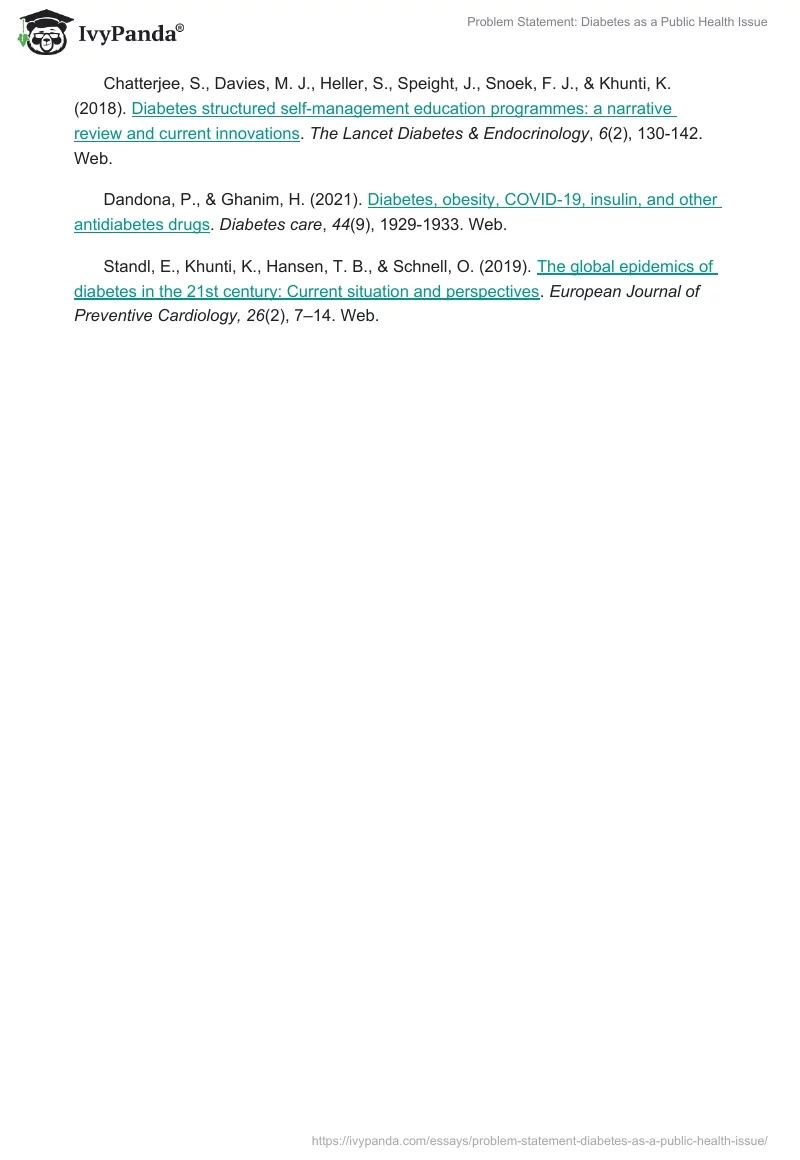Epidemiologic and medical evidence indicates that diabetes is a worldwide public health issue. Standl et al. (2019) recorded an increase in the number of adults with diabetes from 8.1 million in 1980 to 22.4 million in 2014. In the two years of the pandemic, from 2019 to 2021, pre-diabetes and diabetes-related claims increased by 26% in the US (Dandona & Ghanim, 2021). By observing the rapid rise in diabetes and the development of insulin resistance, researchers predict that by 2040, there will be more than 600 million diabetic people in the world (Al-Lawati, 2017). Moreover, many people who already have diabetes do not yet show symptoms or are officially diagnosed. There are almost 200 million possible chronically ill patients worldwide (Al-Lawati, 2017). The US healthcare system is no longer able to control the pace of diabetes, and the development of the situation heralds a deep crisis in the healthcare system.
Diabetes is a lifestyle-related disease; therefore, it has many causes, including malnutrition, physical inactivity, stress, and hormonal diseases. This means that only holistic therapies can have an effect that combines pace and lifestyle changes, the spread of nutrition education, and the promotion of other therapeutic and psychotherapeutic approaches (Chatterjee et al., 2018). A study by Chatterjee et al. (2018) shows that comprehensive self-management interventions help patients manage their chronic illnesses when combined with medication support. The consumer society is bombarding people with a massive amount of high-calorie food that does not contain nutrients. In addition, the information technology society is tying people to their gadgets and encouraging less physical activity. As a result, by not developing self-management skills, people fall into the trap of marketing strategies that encourage a destructive lifestyle.
References
Al-Lawati J. A. (2017). Diabetes Mellitus: A Local and Global Public Health Emergency!Oman medical journal, 32(3), 177–179. Web.
Chatterjee, S., Davies, M. J., Heller, S., Speight, J., Snoek, F. J., & Khunti, K. (2018). Diabetes structured self-management education programmes: a narrative review and current innovations. The Lancet Diabetes & Endocrinology, 6(2), 130-142. Web.
Dandona, P., & Ghanim, H. (2021). Diabetes, obesity, COVID-19, insulin, and other antidiabetes drugs. Diabetes care, 44(9), 1929-1933. Web.
Standl, E., Khunti, K., Hansen, T. B., & Schnell, O. (2019). The global epidemics of diabetes in the 21st century: Current situation and perspectives. European Journal of Preventive Cardiology, 26(2), 7–14. Web.


